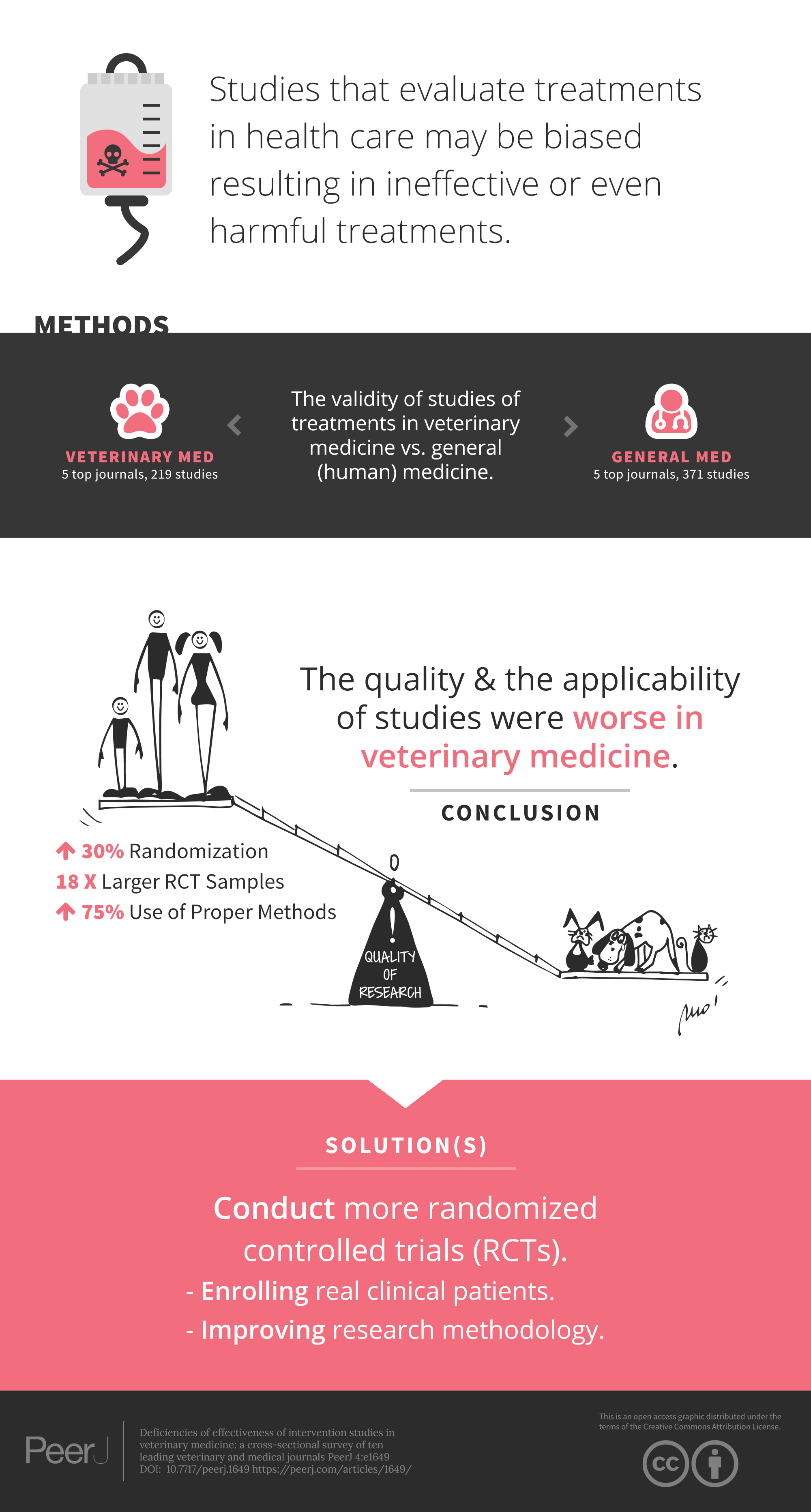LAY SUMMARY
Top Veterinary journals were compared to top medical journals. Veterinary articles had several deficiencies that may limit the validity of the interventions used in veterinary medicine. There is urgent need of improving the research performed in veterinary medicine, by improving methodology and number of randomized trials and by enrolling real clinical patients.
ABSTRACT
The validity of studies that assess the effectiveness of an intervention (EoI) depends on variables such as the type of study design, the quality of their methodology, and the participants enrolled. Five leading veterinary journals and 5 leading human medical journals were hand-searched for EoI studies for the year 2013. We assessed (1) the prevalence of randomized controlled trials (RCTs) among EoI studies, (2) the type of participants enrolled, and (3) the methodological quality of the selected studies. Of 1707 eligible articles, 590 were EoI articles and 435 RCTs. Random allocation to the intervention was performed in 52% (114/219; 95%CI:45.2–58.8%) of veterinary EoI articles, against 87% (321/371; 82.5–89.7%) of human EoI articles (adjusted OR:9.2; 3.4–24.8). Veterinary RCTs were smaller (median: 26 animals versus 465 humans) and less likely to enroll real patients, compared with human RCTs (OR:331; 45–2441). Only 2% of the veterinary RCTs, versus 77% of the human RCTs, reported power calculations, primary outcomes, random sequence generation, allocation concealment and estimation methods. Currently, internal and external validity of veterinary EoI studies is limited compared to human medical ones. To address these issues, veterinary interventional research needs to improve its methodology, increase the number of published RCTs and enroll real clinical patients.
CITATION
(2016) Deficiencies of effectiveness of intervention studies in veterinary medicine: a cross-sectional survey of ten leading veterinary and medical journals. PeerJ 4:e1649 https://doi.org/10.7717/peerj.1649
